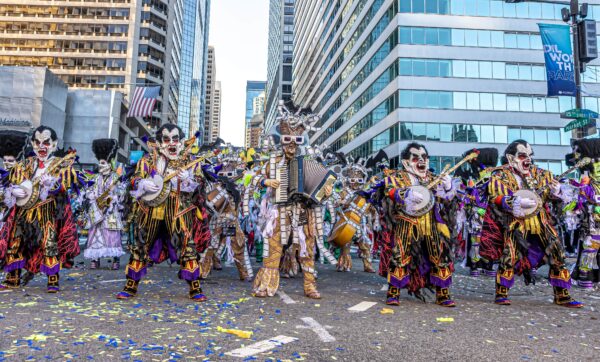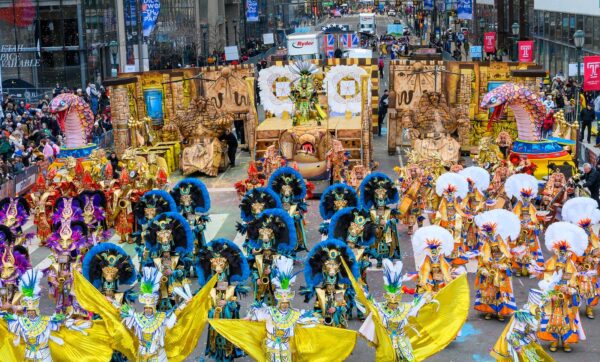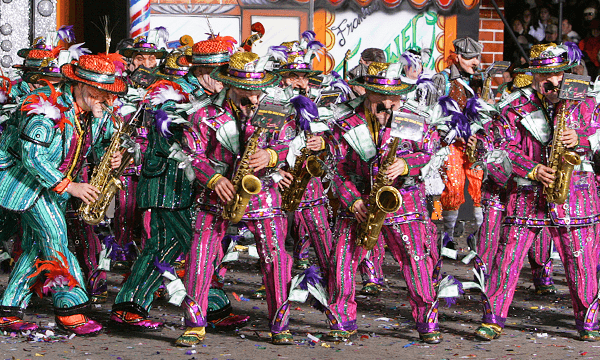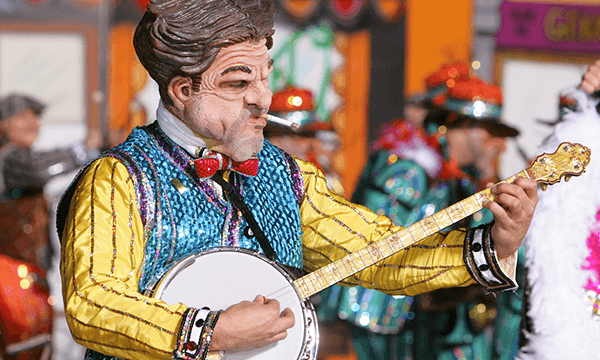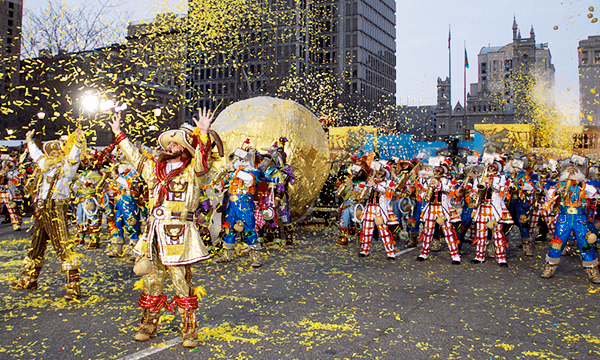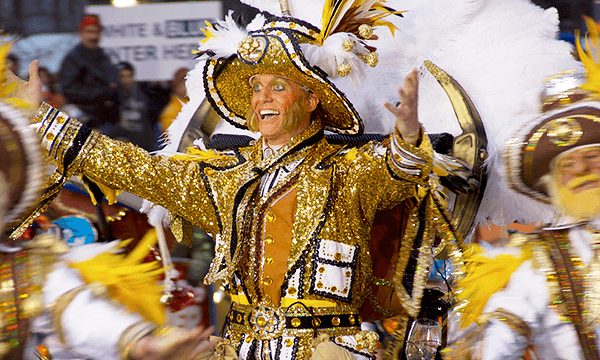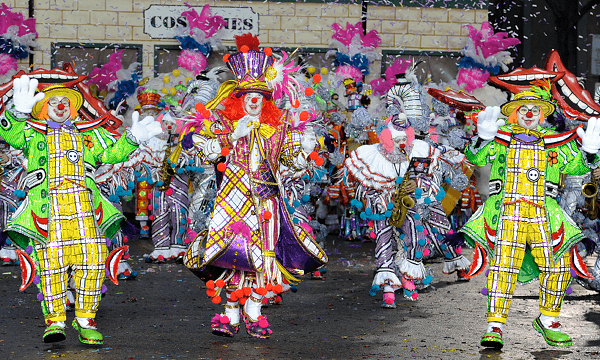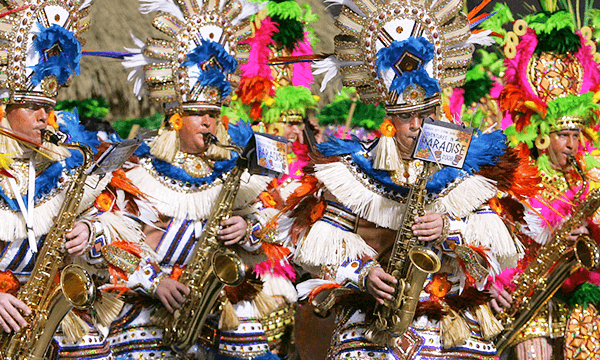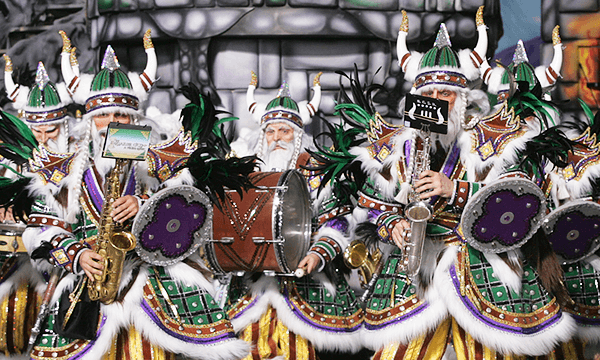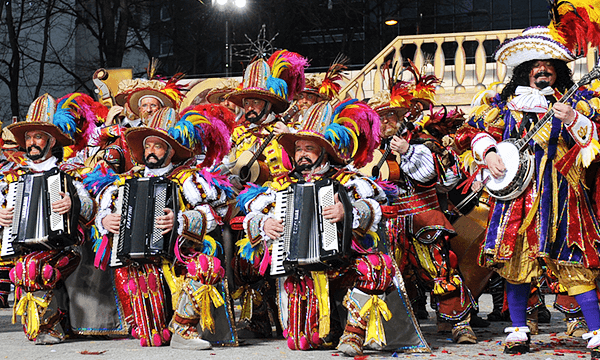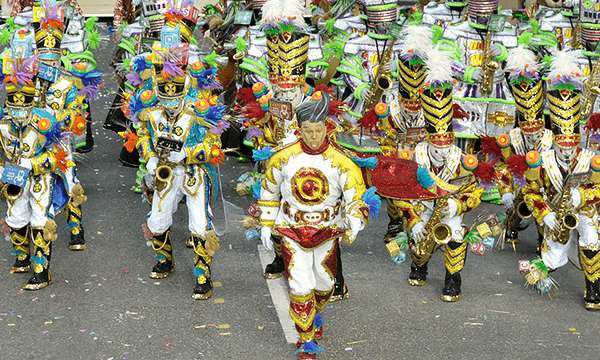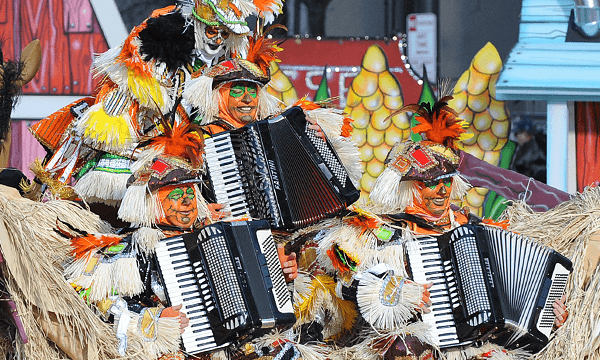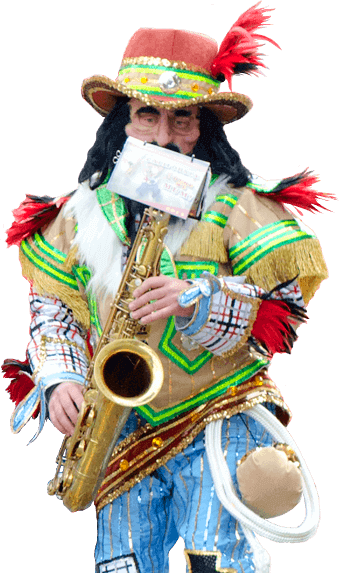The Philadelphia Mummers Parade is believed to be one of the oldest folk festivals in America, and a tradition that has been going on since the time of ancient Egyptians.
However, the word Mummer can be traced back to ancient Greece. It is derived from Momus, the personification of satire and mockery. It’s also found in an old English word mommer, which relates to miming, masking and frolicking. You can see how they both intertwine.
Oddly enough, the Scandinavian immigrants were the ones who really jumpstarted the Mummer’s tradition in Philadelphia. The city happened to have a heavy amount of Swedish folk, who held boisterous end-of-year celebrations to ring in the New Year. This mixed with the British tradition of their play St. George and the Dragon, which entailed lavish costumes and a bit of tomfoolery, began to build the basic structure of the Mummers Parade that we know today.
However, the first documented Mummer-like parade in America occurred during the Revolutionary War. In 1778 the British, as a farewell send off, gave William General Howe an extravagant party that entailed a lot of details that were very similar to that of a modern day Mummers Parade.
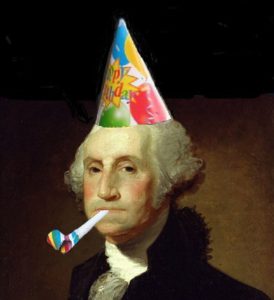 Our very first president, George Washington, must have taken note of this celebration, as he is also contributed with the continued effort of the Mummers Day Parade. From 1790 to 1800, Philadelphia served at the nation’s temporary capital, while the Federal City was under construction. Washington lived in the President’s House right on 6th and Market Street and is credited with calling upon the Mummers New Year’s Day to celebrate the holiday for all 7 years he lived in Philadelphia. Groups of people would go door to door to recite poems, tell jokes, and friendly impersonations of Washington. In exchange, they received cakes and alcohol. They did this, not only for Washington, but as well as the residents in the area.
Our very first president, George Washington, must have taken note of this celebration, as he is also contributed with the continued effort of the Mummers Day Parade. From 1790 to 1800, Philadelphia served at the nation’s temporary capital, while the Federal City was under construction. Washington lived in the President’s House right on 6th and Market Street and is credited with calling upon the Mummers New Year’s Day to celebrate the holiday for all 7 years he lived in Philadelphia. Groups of people would go door to door to recite poems, tell jokes, and friendly impersonations of Washington. In exchange, they received cakes and alcohol. They did this, not only for Washington, but as well as the residents in the area.
Unfortunately in 1808, The Mummers’ antics had drummed up some negative feelings towards them, especially from social leaders of the day. As a result, masquerading was declared a public nuisance and anyone found to be organizing parades and merrymaking could be subject to fines and imprisonment.
Fortunately for the future of the Mummers, the tradesmen, firefighters, farmers, and craftsmen far outnumbered those offended by the tradition. They continued on with their parades as though no regulations were placed on them. Although they had been “quieted” at times, there were never any convictions, no one had ever been imprisoned by the new laws regulating the Mummers tradition, and they were revoked by the 1850’s.
 By 1901, the Mummers Day Parade has been officially adopted by the city of Philadelphia. Although the tradition has been going on since the conception of this country, the turn of the century from the 1800’s to the 1900’s can conceptually pinpoint the modern day start of this wonderful tradition.
By 1901, the Mummers Day Parade has been officially adopted by the city of Philadelphia. Although the tradition has been going on since the conception of this country, the turn of the century from the 1800’s to the 1900’s can conceptually pinpoint the modern day start of this wonderful tradition.
Today there are over 15,000 people who march on New Years Day. These 15,000 individuals are divided into 4 different groups that include: Comic, Fancy, Fancy Brigade and String Band. These different groups represent different parts of the parade.
For instance, the Comic groups start the parade. They’re dressed in humorous costumes and dance to recordings such as the Mummer famous “Golden Slippers.” They also usually employ a theme that they parody during their routine.
The Fancy division utilizes small floats and live music to strut their stuff. They are also decked in brightly colored costumes.
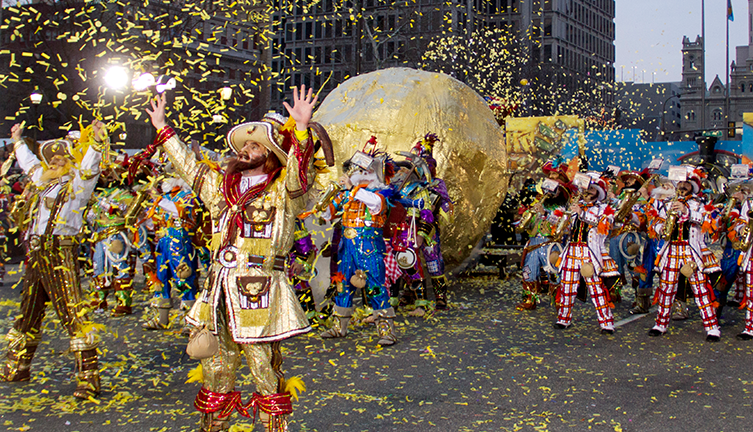
The String Bands, such as Quaker City, feature a much larger, well orchestrated performance that involves themed costumes, written music, and a choreographed dance that goes with their performance. They often feature banjos, saxophones (alto, tenor, baritone and bass), accordions, double basses, drums, glockenspiels and even violins in musical arrangements
The last (but certainly not least) division is the Fancy Brigades. The largest category with the largest crews, the fancy brigades march the southernmost portion of the parade route, before heading to the convention center for a ticketed show and judging. Until the late 1970s, the fancy brigades were simply larger presentations within the Fancies. As the props grew larger, more cumbersome and more vulnerable to wind, rain and snow, the decision was made to move the Brigades indoors.
This incredible spectacle, made up of 4 divisions, has been going on for well over 100 years now. It has become a staple within the Philadelphia tradition and accrues national attention every year. It may look like a lot of chaos happening at once, but the amount of organization that goes into is well overlooked. Over 15,000 individuals come together every New Years Day to put on one of the most fantastical events America gets to witness ever year. With competition that does not cease, it’s practically a guarantee that each year is better than the last! So make sure you check it out every year on New Years Day!


